Just over a week and a half ago now I visited Portsmouth’s Historic Dockyard with Ben, his son Dylan, Ben’s sister Tessa and her son Ned and my Dad. Portsmouth is an old stomping ground of mine from my university days and I always like taking a trip back to the harbour city. I last visited the Historic Dockyard with HMS Victory, HMS Warrior, The Mary Rose and a plethora of naval museums back in the mid to late 90s long before I got into photography, so I was looking forward to revisiting these iconic examples of Britain’s sea-faring history and capturing a little bit of that magic through the lens.
Below are some of my pictures from the day and a little bit of commentary about these wonderful ships and museums and the history they bore witness to. To see all my pictures from the visit see my flickr set Portsmouth Historic Dockyard Nov 2010. I’m also going to be attending the Victorian Festival of Christmas this weekend, (tickets for the event are available to pre-purchase on the Historic Dockyard Website) it runs for Fri 26, Sat 27 and Sun 28 Nov 2010, so expect to see some festive naval pictures in the near future too.
The Historic Dockyard
Before getting onto the individual historic ships I think it’s worth mentioning that the buildings and landmarks of the dockyard itself are as historically significant as the ships it is now home to. Dating over a wide period of time and with many different uses, the buildings boast some great Victorian architecture, an excavated mast pond that dates back to 1665, boat houses that played a pivotal role in preparation for the D-day landings and a rebuilt Semaphore tower which was destroyed by fire.
The site is also strewn with items of naval significance from bronze and gilt statues, cannons, antique vans, ship’s figureheads to rusting anchors, ropes and naval equipment. One day is just not long enough to have a proper look around the whole of the dockyard and your ticket does allow you to come back and visit the dockyard (but not the ships or Mary Rose museum) on another day.
HMS Victory, HMS Warrior and the Mary Rose are all lovingly cared for and continually being restored by a dedicated team of historians, craftsmen and volunteers and we owe a debt of gratitude to these individuals who continue to preserve them for generations to come.
These ships are truly living museums that bring alive the experiences and history that must have played out countless times aboard them, making history a vibrant and interesting experience for young and old alike. If you do get the opportunity to visit Portsmouth, the historic dockyard is a must see. To find out more and to pre-purchase your tickets visit the Portsmouth Historic Dockyard Website.
HMS Warrior
HMS Warrior was the first of the British ironclad battleships and is the only remaining 19th Century Capital ship left in existence. She never once fired her guns in anger, it was said that her mere presence was deterrent enough! She was launched in 1860, built in response to the aggressive programme of ship building in France including the first ironclad battle ship La Giorie.
Figure 1 is a full length picture of HMS Warrior taken with my new fish eye lens. I liked how the warping gave an additional sense of magnificence and power to its presence.
Warrior was the pride of Queen Victoria’s fleet. Powered by both steam and sails she was the largest, fastest and most powerful ship of her time and has been lovingly restored to her original glory. She is a magnificent specimen of Victorian innovation and British naval power from a bygone era and well worth a visit.
In figure 2 you can see some beautiful brass patterns on the aft (rear) deck of HMS Warrior. These patterns are not just for show – they were a means of making the great cannon on the aft deck of the warrior more mobile and allowing the cannon to be positioned to fire at enemies on all fronts.
To find out more about the history of this magnificent ship and the important part she played in British naval history check out the HMS Warrior Website.
HMS Victory
HMS Victory is probably one of the best known historic British battleships. She is a classic example of mid 18th Century warship construction and craftsmanship. The Victory has been out of the water and in her current dry dock home at the historic dockyard since January 1922 and almost wholly restored to her 1805 battle readiness.
Victory is famous for being the Flagship commanded by Lord Admiral Horatio Nelson during the battle of Trafalgar on 21 October 1805. Nelson made his pivotal battle decision to break from the prevailing naval tactical orthodoxy, by dividing his smaller force into two columns directed perpendicularly against the larger enemy fleet from the deck of Victory.
Nelson’s decision was the decisive blow which culminated in the greatest British naval victory of the Napoleonic Wars. Indeed the French fleet was never in a position to be able to seriously challenge the British at sea again, even though the war went on for a further 10 years. It was a magnificent show of the British naval supremacy and ingenuity, with twenty-seven British ships facing off and defeating a combined force of thirty-three French and Spanish ships. At the end of the battle the Franco-Spanish fleet had lost twenty-two ships and the British not a single one!
Sadly the Victory is also famous for being the site of Lord Admiral Nelson’s mortal wounding up on deck shortly after 1 pm amidst the action of the battle of Trafalgar and his untimely death just three hours later in the bowels of the ship. Just like in his battle tactics, Nelson broke with the tradition of a funeral at sea and requested that his body be taken back for burial in England. This was no mean feat as the crew were several weeks from home and dead bodies didn’t keep well in a fully armed and crewed battleship like the Victory.
Added to the general difficulties that faced the Victory in transporting Nelson’s body home the ship had sustained damages and needed to be towed to Gibraltar for emergency repairs and to bring ashore some of the injured crew before making her journey home to Britain with the fallen hero. In the end a great barrel of French Cognac proved to be the answer to preserving Nelson’s body. The admiral was lowered into a barrel of France’s finest Cognac and transported back home to Britain strapped to the mainmast and under constant guard. When his body was removed from the barrel it had been perfectly preserved. Legend holds that not a single drop of Nelson’s Cognac was wasted!
His pickled body finally returned to Britain on 09 January 1806 and Lord Admiral Horatio Nelson, decorated hero of the battle of Trafalgar, was afforded the great honour of a full state funeral (normally only afforded to Britain’s reigning or former Sovereigns and heads of state). The funeral barge in figure 3 was used to ferry him down the Thames from the Admiralty to St Paul’s Cathedral where he was laid to rest within a sarcophagus originally carved for Cardinal Wolsey. The funeral procession was made up of 32 admirals, over a hundred captains, and an escort of 10,000 troops.
HMS Victory and the enduring hero Lord Admiral Horatio Nelson are a wonderful testament to the British Navy’s dominance of the sea, demonstrating the ingenuity and nerve of the Navy and the fine shipbuilding and craftsmanship of British dock workers. The Victory is well worth a visit and the tour is very informative and enjoyable.
To find out more about the Victory and her remarkable history visit the Victory Website.
The Harbour Tour and Spinnaker Tower
If you buy the full attraction ticket you get a nice tour round the harbour, taking in views of Spinnaker Tower, the naval ships currently docked in the harbour, Gun Wharf Quays and of the Warrior in her dock from the harbour.
The tour takes approximately an hour and you can choose to sit in the comforts of the cabin, or brave the sea breeze up on deck.
Unfortunately with the winter nights drawing in, the light at 3.00 pm on a grey day in Britain did not make for ideal photography conditions, but I got a few nice pics of Spinnaker Tower, the Gosport Ferry and the Warrior.
Towering 170 metres above the Portsmouth harbour the Spinnaker Tower was built as one of the British commemorative Millenium monuments. A truly modern piece of architecture that fits right in with the spirit of Portsmouth, an area of innovation, whilst remembering tradition and history.
You get a 350 degree panoramic view of Portsmouth harbour and on a clear day can see out for up to 23 miles. Her view takes in the historic dockyard, including HMS Victory and HMS Warrior, Gun Wharf Quays, Gosport and the Isle of Wight.
For the brave amongst you on viewing deck 1 you can walk out onto Europe’s largest glass floor, maybe even dance on air like Ginger Rogers and Fred Astaire?
If you’re in Portsmouth and you’ve got the time, you’d be crazy not to take a trip up this tower! For more info visit www.spinnakertower.co.uk
More fun than you can shake a stick at!
I hope you’ve enjoyed reading this article and that it has perhaps engendered an appetite to visit this wonderful treasure trove of naval history. Portsmouth has often gotten a bad reputation over the years, but my time living there was a very enjoyable one and I was surprised at the wonderful things to be found in the city. I hope that this glimpse into just one aspect of Portsmouth’s cultural and historical significance will help to change perceptions of the city and ensure that more people do not miss out on the wonderful experiences the city has to offer. Who knows maybe I’ll even change the minds of those who had formerly written it off.
And finally, just to prove that it’s not only the grown-ups that can have fun at the historic dockyard I’ve included a couple of pictures of Dylan taken there. He ran around all day getting excited by almost everything he saw, took pictures of almost as many things as he looked at and was fairly pooped by the time we got back that evening. I’m really looking forward to seeing Dylan’s face on Saturday when he sees the Dockyard all done up with Victorian Christmas cheer, complete with green suited Father Christmas, a fairy light be-decked Warrior and apparently real snow! Though truth be told, I’m probably just as excited, if not a teensy bit more (grin).
Fair winds and happy sailing one and all.
Wealie x

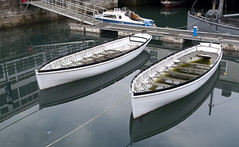
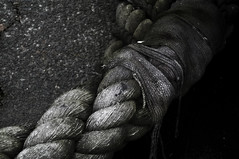

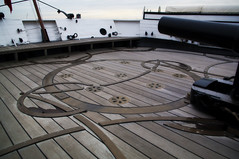
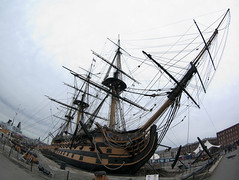


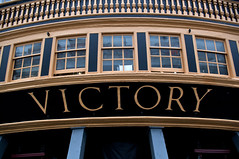

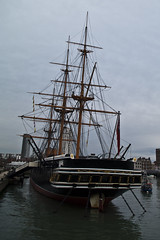




 Follow Wealie on Feedburner
Follow Wealie on Feedburner Follow Wealie on Google
Follow Wealie on Google RSS feed of Wealie's Blog
RSS feed of Wealie's Blog GeneralWealie on Twitter
GeneralWealie on Twitter Ruth Weal Daily on Paper.li
Ruth Weal Daily on Paper.li Ruth Weal on Facebook
Ruth Weal on Facebook Wealie on Flickr
Wealie on Flickr Wealie on Google+
Wealie on Google+ Wealie on Instagram
Wealie on Instagram Wealie on LastFM
Wealie on LastFM Wealie on MySpace
Wealie on MySpace Wealie's YouTube Channel
Wealie's YouTube Channel GeneralWealie on Google
GeneralWealie on Google info@wealie.co.uk
info@wealie.co.uk Ruth Weal on LinkedIn
Ruth Weal on LinkedIn Ruth Weal on skillpages
Ruth Weal on skillpages Wealie on Brainshark
Wealie on Brainshark Wealie on SlideShare
Wealie on SlideShare Wealie on Etsy
Wealie on Etsy Wealie on Instacanvas
Wealie on Instacanvas Wealie on redbubble
Wealie on redbubble Wealie on Society6
Wealie on Society6
Absolutely loved the photos Ruth. Keep the blogs coming, they are great! Moni x
Thanks Moni, I’m glad you like the site x